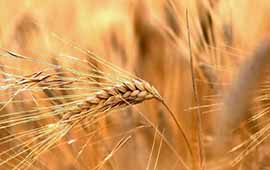Rye, along with barley, oats and wheat, is one of the most traditional crops in Europe.
The grain of this culture is used to prepare flour of three varieties at once – seeded, peeled and wallpaper, and is also the basis of malt, from which kvass is subsequently brewed. By the way, bread made from rye flour is healthier because it contains less gluten and more macro- and microelements. In addition, rye is the basis for feed for farm animals, and is actively used by farms. This culture is grown mainly in the Northern Hemisphere, since it is here that favorable conditions have been created for this.
What factors affect the yield of rye
The yield of rye, of course, depends on external factors and climatic conditions in which the plant develops. This crop is less demanding on growing conditions than wheat. For example, it has a good root system, which allows the plant not to fear drought, since long roots easily penetrate into the very depths of the soil and assimilate the phosphorus and potassium it needs. Rye can be safely grown not only on black soil – podzolic soils, as well as gray forest soils, are suitable for this culture. At the same time, this crop shows poor productivity on heavy clays, as well as swampy or saline soils.
Rye, unlike other cereals, tolerates frosts more easily, and easily grows at temperatures of -21 degrees, and the seeds begin to germinate already at a temperature of +2 degrees. This crop is cross-pollinated, and therefore pollination occurs during quiet warm weather with sufficient air humidity, and insects do not participate in this process. By the way, for this process to be successful, seed plots of diploid varieties should have up to 300 meters of spatial isolation, and tetraploid ones – up to 500 m. The culture also requires nitrogen fertilization, which also affect the yield of rye.
Rye yield in 2020
As you know, 2020 was not the most favorable year for farmers in all countries. The coronavirus pandemic has sharply reduced the turnover of cereals globally, and the drought also did not add to the positive, reducing the yield of almost all crops. As a result, trade between countries decreased, as producing countries chose to reduce supplies while retaining collected products within their own state. The main suppliers of this crop are Poland, Latvia and Estonia. Germany also showed a good yield of this crop, having collected 3500 thousand tons. in 2020 and Denmark (725 thousand tons). Recall that in Europe there are also features of trade in this crop – import duties, which in 2020 were left at the level of 10.40 euros per ton. Rye prices, therefore, remained in line with those of corn and sorghum.






